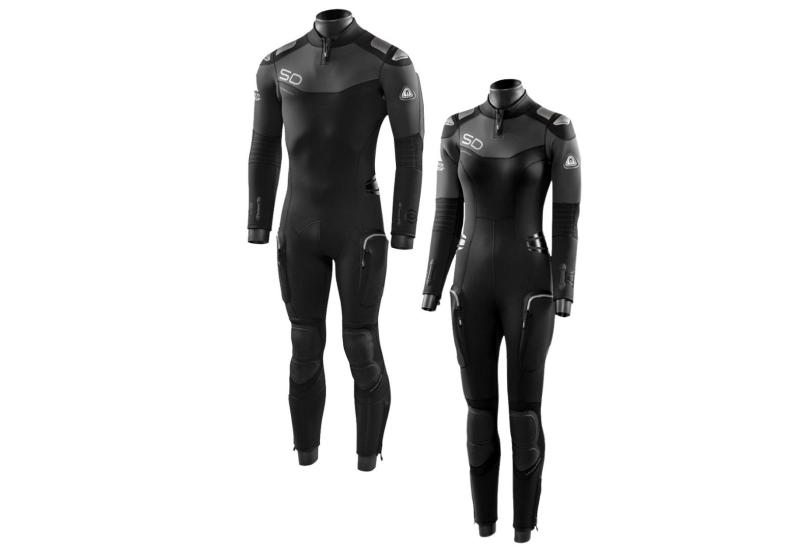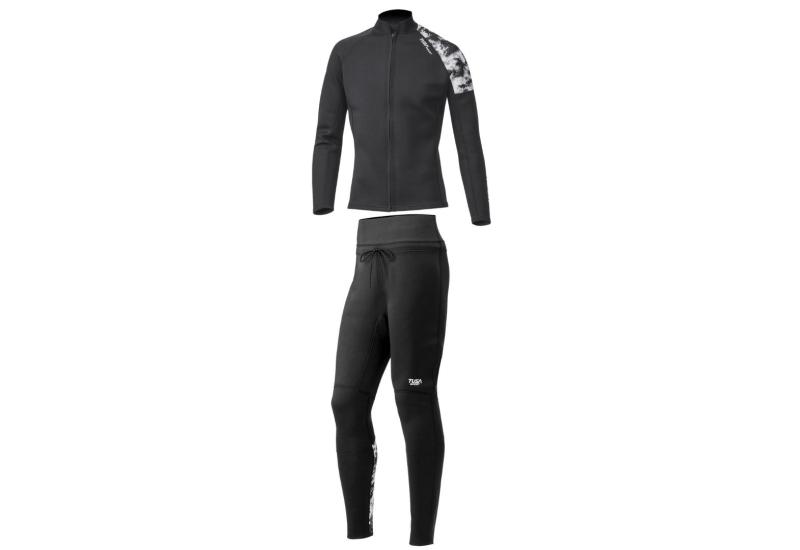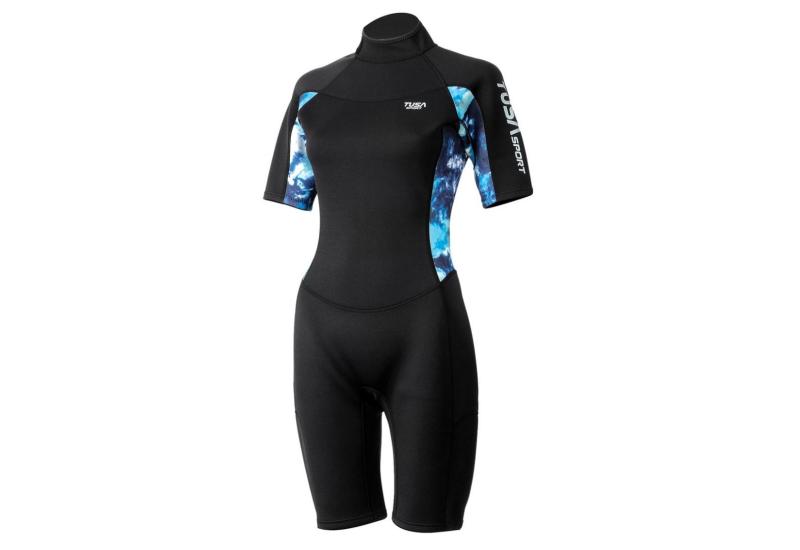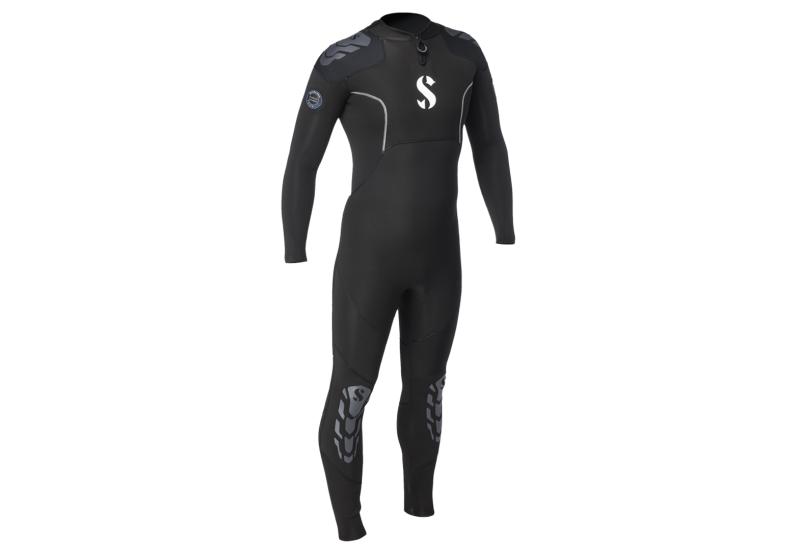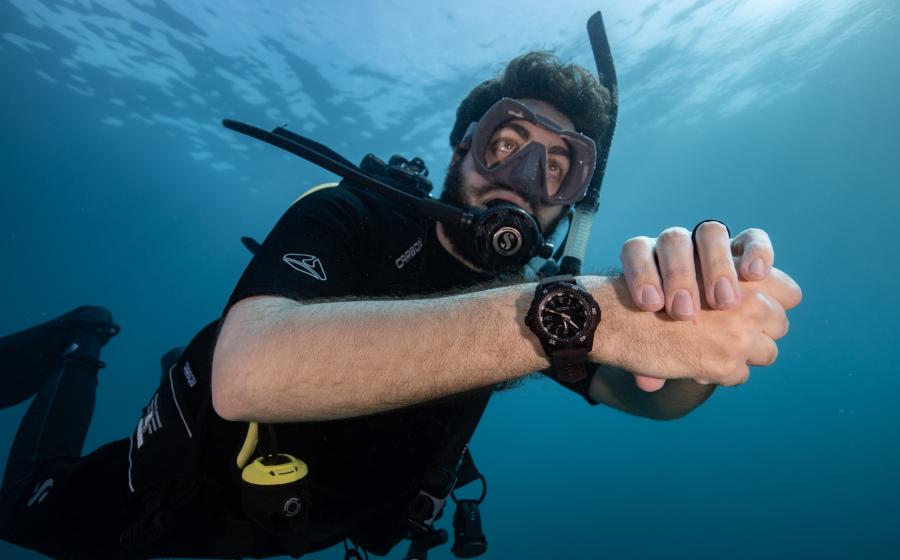Best 5mm Wetsuits, Neoprene Skins & Vests of 2001
When it comes to exposure protection, thin is in. Wetsuit makers have learned to use seals and dams to prevent almost all water from leaking past your collar and wrists and then flowing through your suit. Less water flowing over your skin means less of your body heat is flushed out, so the wetsuit can be thinner and provide the same warmth. Benefit: more flexibility, more comfort, less lead on your weight belt.
At the same time, neoprene makers have learned to shave the stuff almost paper-thin, then bond it to nylon. The jury is still out on the durability of these thinner suits, but the appearance of 1mm and even .5 mm neoprene, combined with effective seals, has resulted in what might be the ultimate exposure suits for the tropics. We call them "neoprene skins."
The same "semi-dry" technology of seals and dams has made a new generation of 5mm wetsuits as warm as yesterday's standard 7mm suit. At least where the water isn't too cold, many divers find they can shed some thickness and gain flexibility.
When you do need more thickness, add it where it counts most: to your torso and your head. A wetsuit vest with an attached hood is the most common addition to a wetsuit in cool water, but the most difficult piece of neoprene to put on and take off. The best ones have design features to help. Zippers, slick surfaces and super-stretchy panels are the three tools for making a vest easier to manage.
When so much depends on flow control inside the suit, a close fit is critical. Wrinkles become water pumps when you move, and defeat even the best seals. That's why our ratings favor suits that come in lots of sizes: they are more likely to give you a good fit.
5mm Wetsuits
How Tight Is Too Tight?
In a wetsuit, tighter is better — up to a point. Zip it up and take a deep breath. Are you fighting the neoprene to expand your chest? Can you touch your toes? Wear the suit for five minutes or so. Does your face turn red? Are the veins standing out on the backs of your hands and feet?
Ideally, a wetsuit should touch you everywhere without stretching too much. Fighting to get the suit to stretch wastes energy, and stretched neoprene is thinner.
Henderson Aquatics Testers' Choice
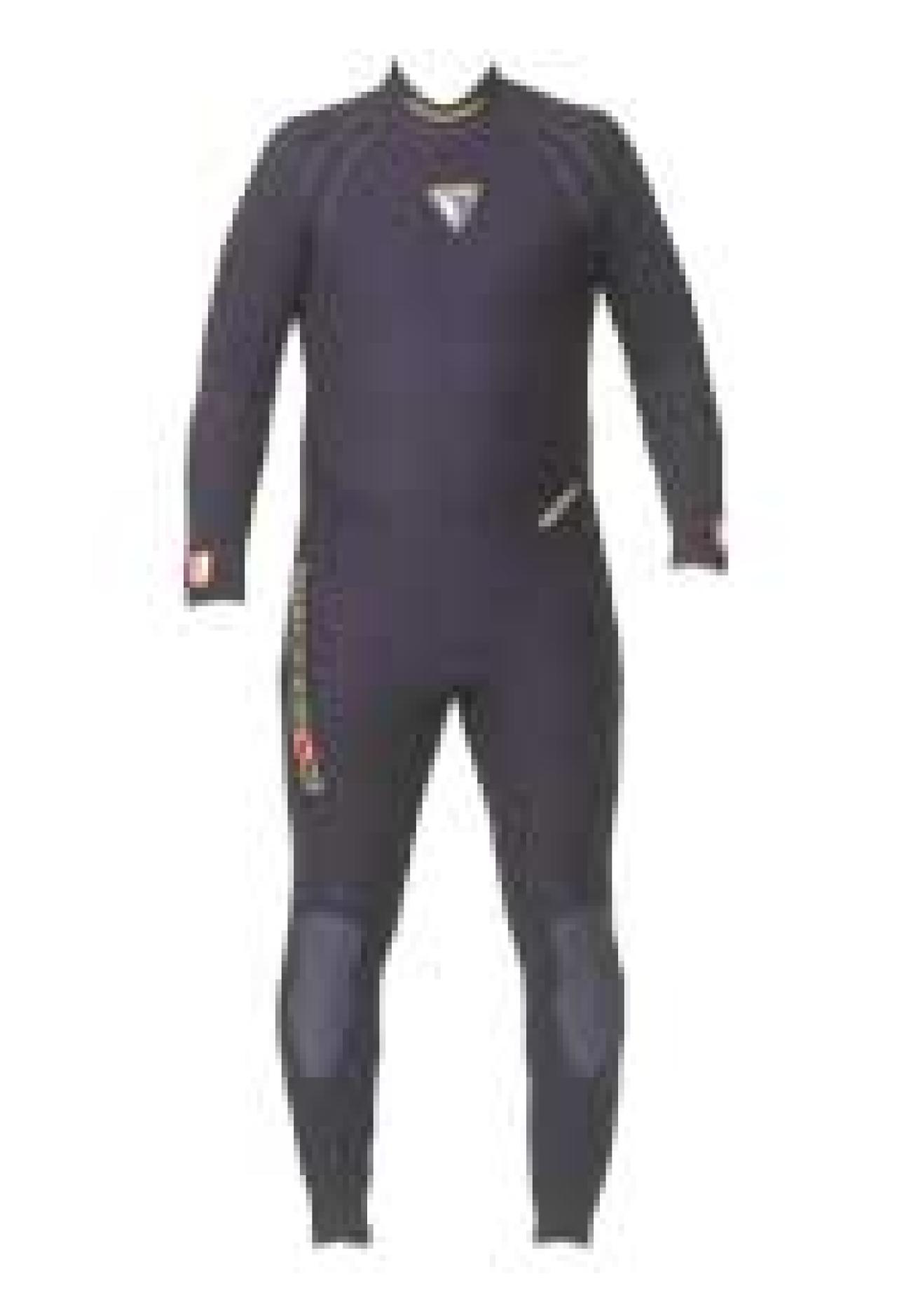
Henderson Aquatics 5mm Gold Core Neoprene Jumpsuit
Henderson Aquatics 5mm Gold Core Neoprene Jumpsuit
Known For: Close fit
The entire inner surface of this suit is coated with smooth urethane or something similar. That makes the whole suit a sealing surface. With lots of sizes and a well-fitting collar, water flow through this suit should be a bare minimum. Back zip. $309.95
Scubapro Testers' Choice
Scubapro 5mm S-Tek Steamer
Known For: Affordability
More than most, the Scubapro S-Tek is part of a coordinated system. For example, it has a slick outer torso designed to mate with a skin-in vest, so water is unlikely to flow between the layers. If the steamer is worn alone, the slick outer torso sheds water. With lots of sizes, an excellent neck seal and a low price. Back zip. Best Buy. $251 (with new "silver skin" lining).
Ocean Reef Testers' Choice
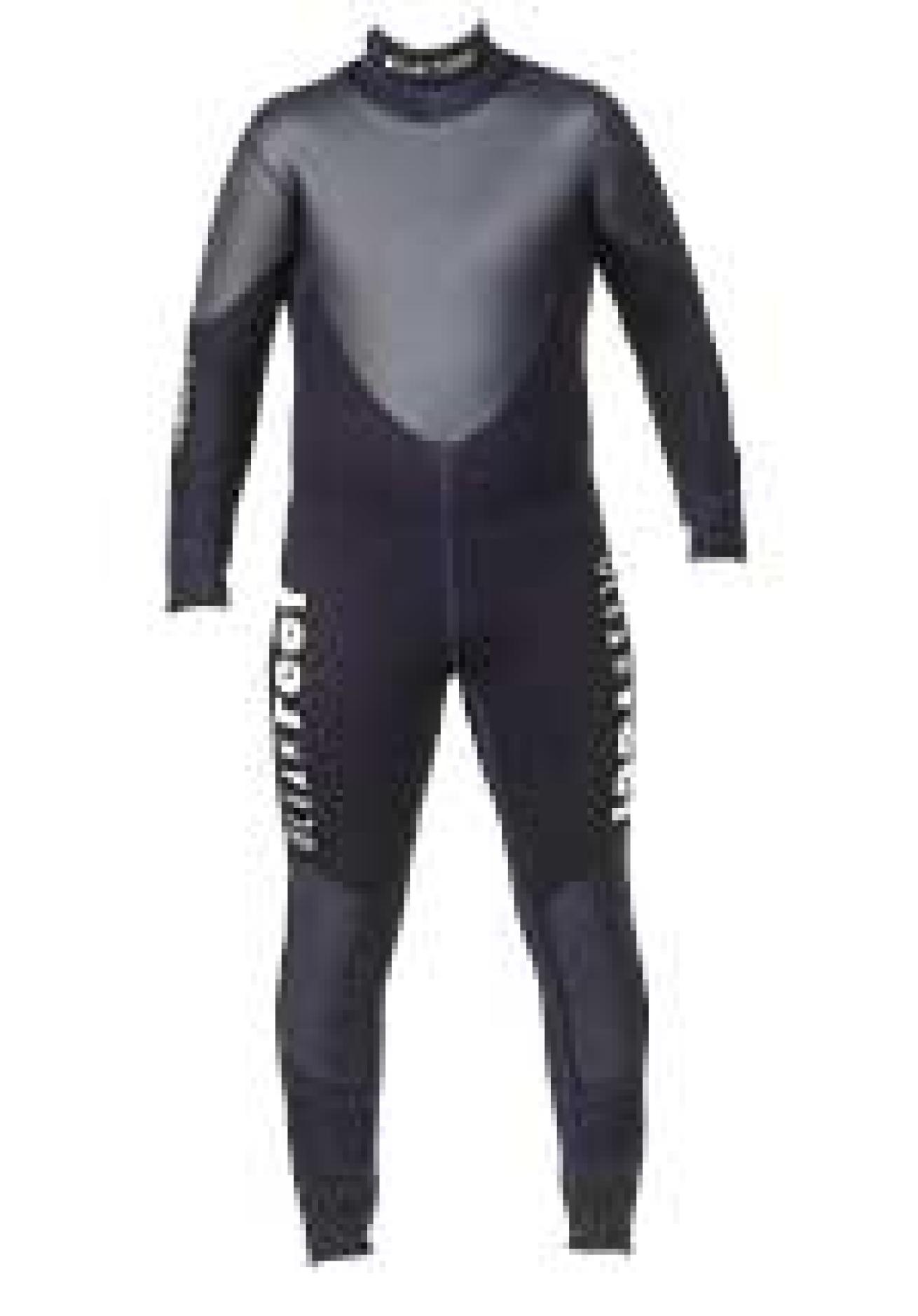
Ocean Reef 5mm Challenger
Ocean Reef 5mm Challenger
Known For: Compression resistance
Though it has a conventional nylon lining, the Challenger has well-designed seals at collar, neck and wrist, plus a slick outer torso for quick drying between dives. The neoprene itself, while soft and stretchy, is also unusually resistant to compression at depth. Back zip. $324; $400 with 3mm hooded vest.
Neoprene Skins
The Neoprene Advantage
Super-thin neoprene suits offer obvious advantages over so-called "Polartec" and "trilaminate" for tropical diving.
Neoprene is waterproof. Water can't penetrate the fabric to your skin. When this thin, neoprene is very stretchy, so it hugs your body without the wrinkles and bags that would pump water in and out whenever you move.
Less flow means less heat loss. Water flow over bare skin is usually a diver's biggest source of heat loss in warm water.
And more! Neoprene skins dry at least as fast as fleece suits and cost, on average, about half as much as fleece suits.
Aeroskin Testers' Choice
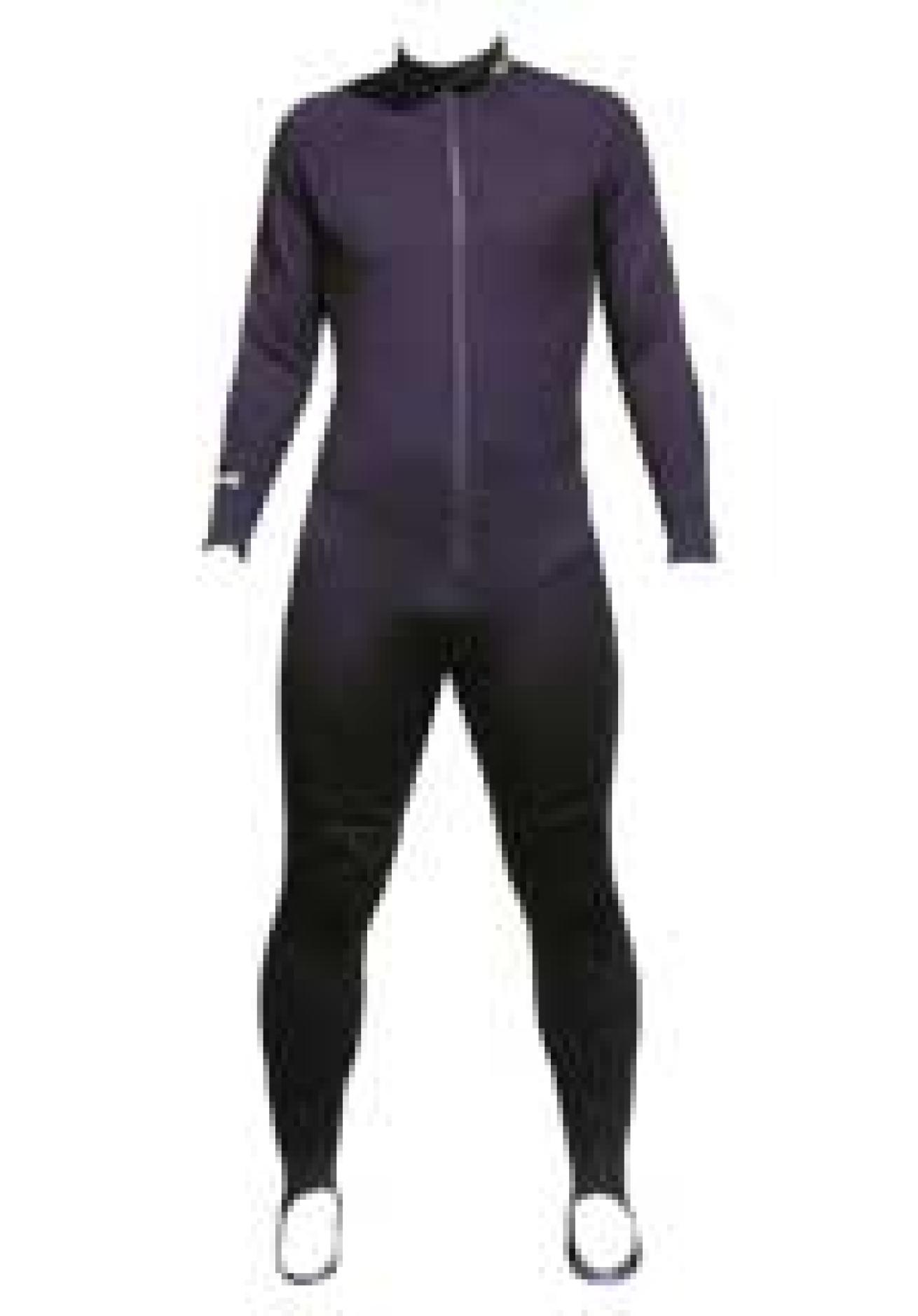
Aeroskin 1mm Jumpsuit
Aeroskin 1mm Jumpsuit
This suit has a well-designed neck seal, even on the front-zip style. While it comes in fewer off-the-rack sizes than some others, the leg, arm and torso lengths can be tailored for only $30 extra. Back zip or front zip. $95.50
Bare Testers' Choice
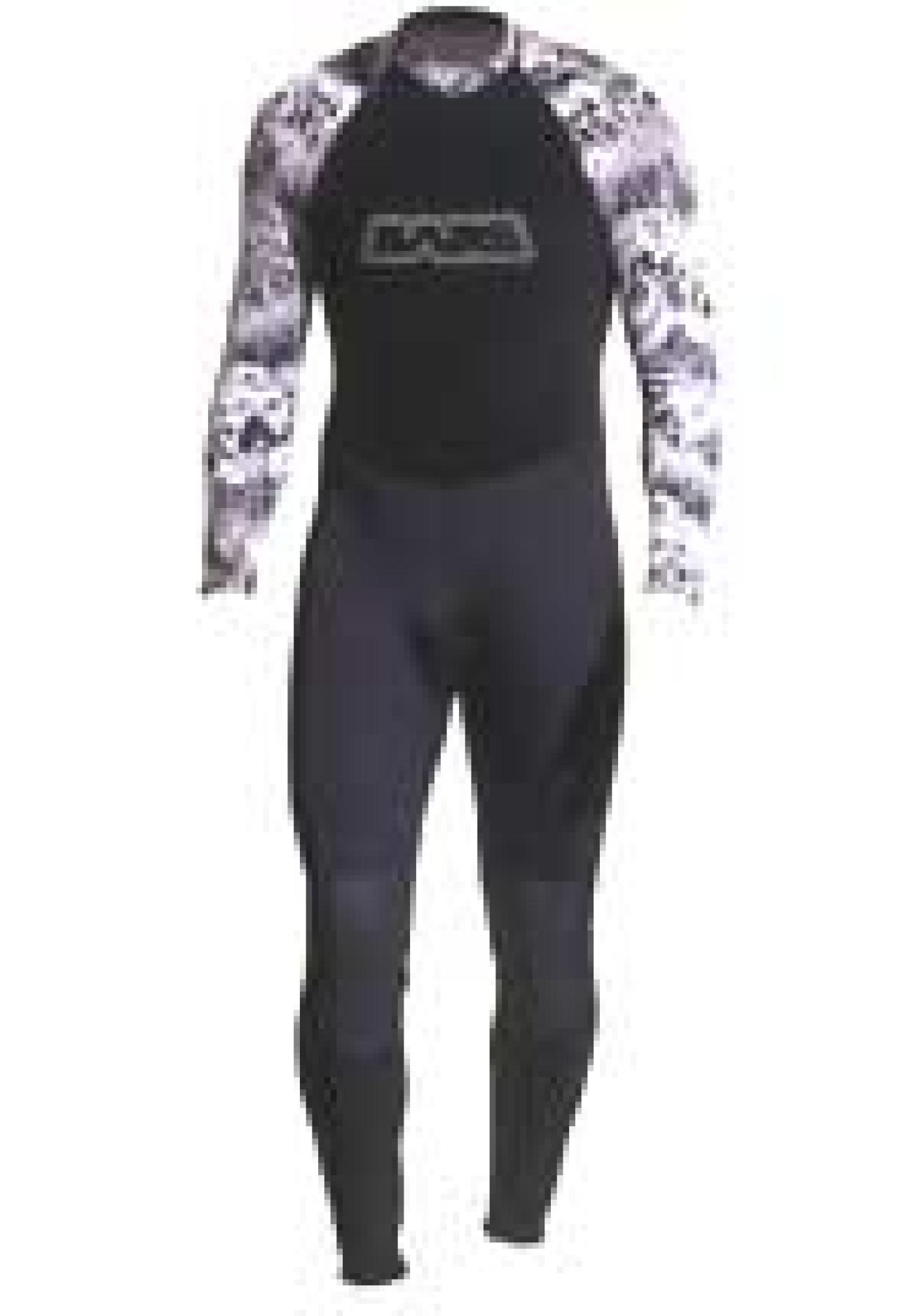
Bare Thermalskin 1.5mm
Bare Sportswear Thermalskin 1.5mm
Known For: Outer materials
The slick outer torso sheds water between dives. That's important because in the tropics you can lose more body heat to wind chill during the surface interval than to the water. Back zip. $139.95
Henderson Aquatics Testers' Choice
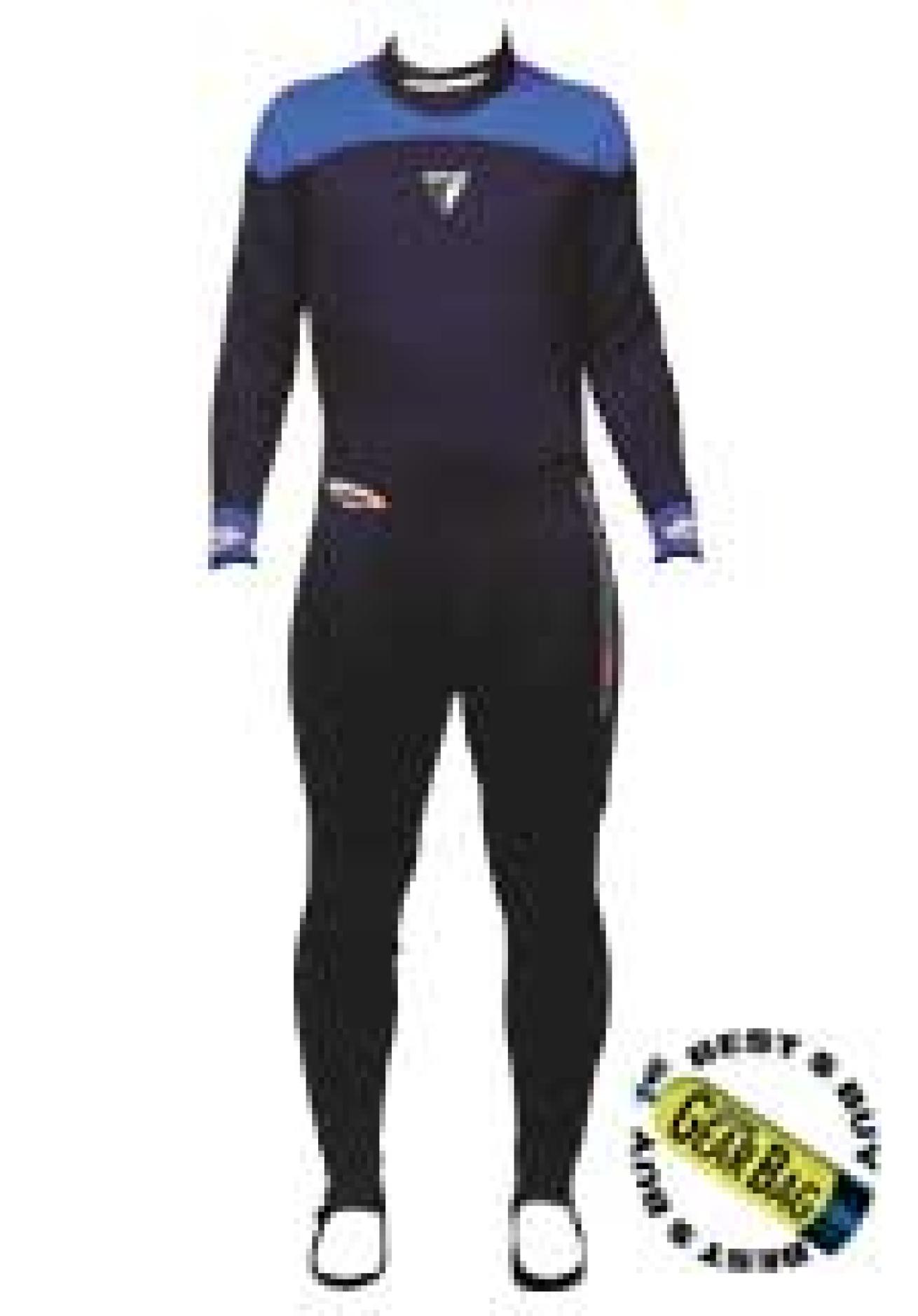
Henderson Microprene Jumpsuit
Henderson Aquatics Microprene Jumpsuit
Known For: Good seals
Good neck and zipper seals. Lots of available sizes mean it's likely to fit you well. A nice plus is a pair of knee pads that are tough yet stretchy. Back zip. Best Buy. $93
Scubapro Testers' Choice
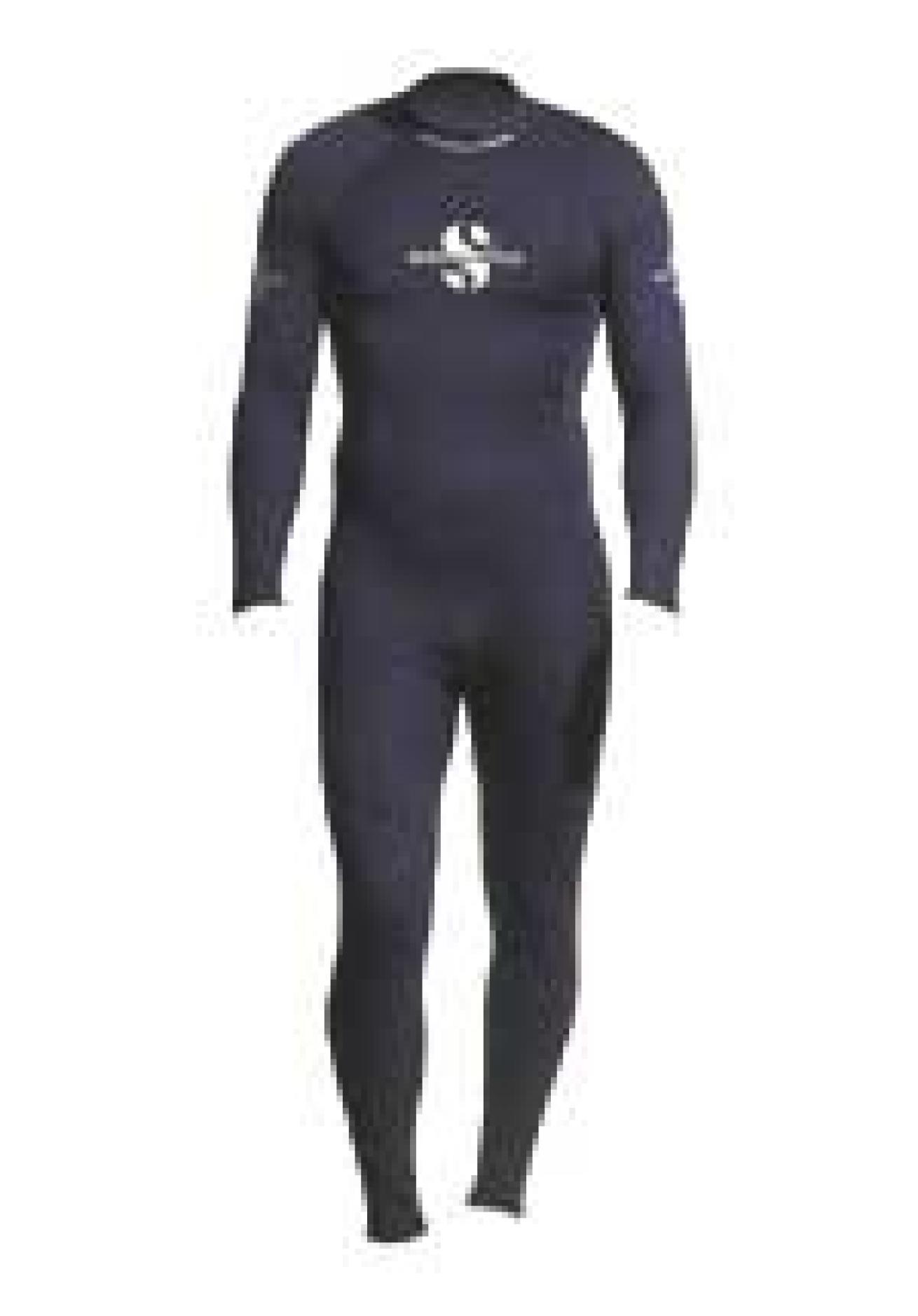
Scubapro 0.5mm Streamer
Scubapro 0.5mm Steamer
Known For: Flexibility
Good seals at all the openings, plus lots of sizes. This is also perhaps the lightest, least bulky of any neoprene skin we've tested. Back zip. $100
Wetsuit Vests
Vests: Inside or Outside?
Traditionally, hooded vests have been worn inside the wetsuit, against the skin. That gives the sensation, at least, of improving the neck seal, because incoming water doesn't touch the skin until it reaches the bottom of the vest. But modern wetsuits have much better neck seals, which are designed to mate to skin, not nylon. Putting the hooded vest between that seal and your neck can make it leak. For that reason, many divers now wear vests on the outside of their wetsuits.
Bare Testers' Choice
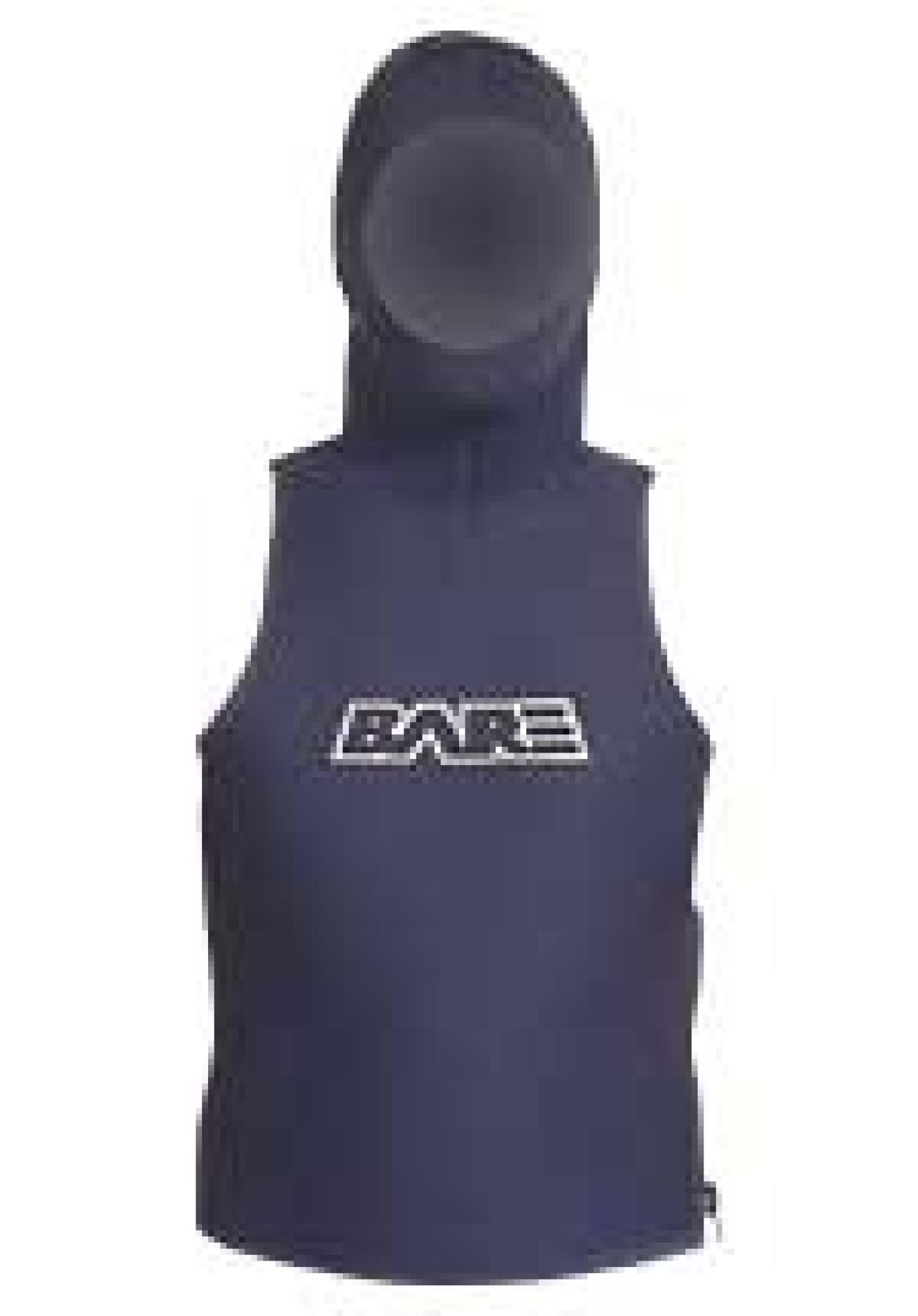
Bare Hooded Wetsuit Vest
| Bare Sportswear Hooded Vest
Known For: Control
A fairly conventional, but intelligent design. A zipper up one side helps you get it on and off. The hood has a wide face seal, and extra bar tacks let you trim it for comfort. 3mm vest, 5mm hood. $79.95
Henderson Aquatics Testers' Choice
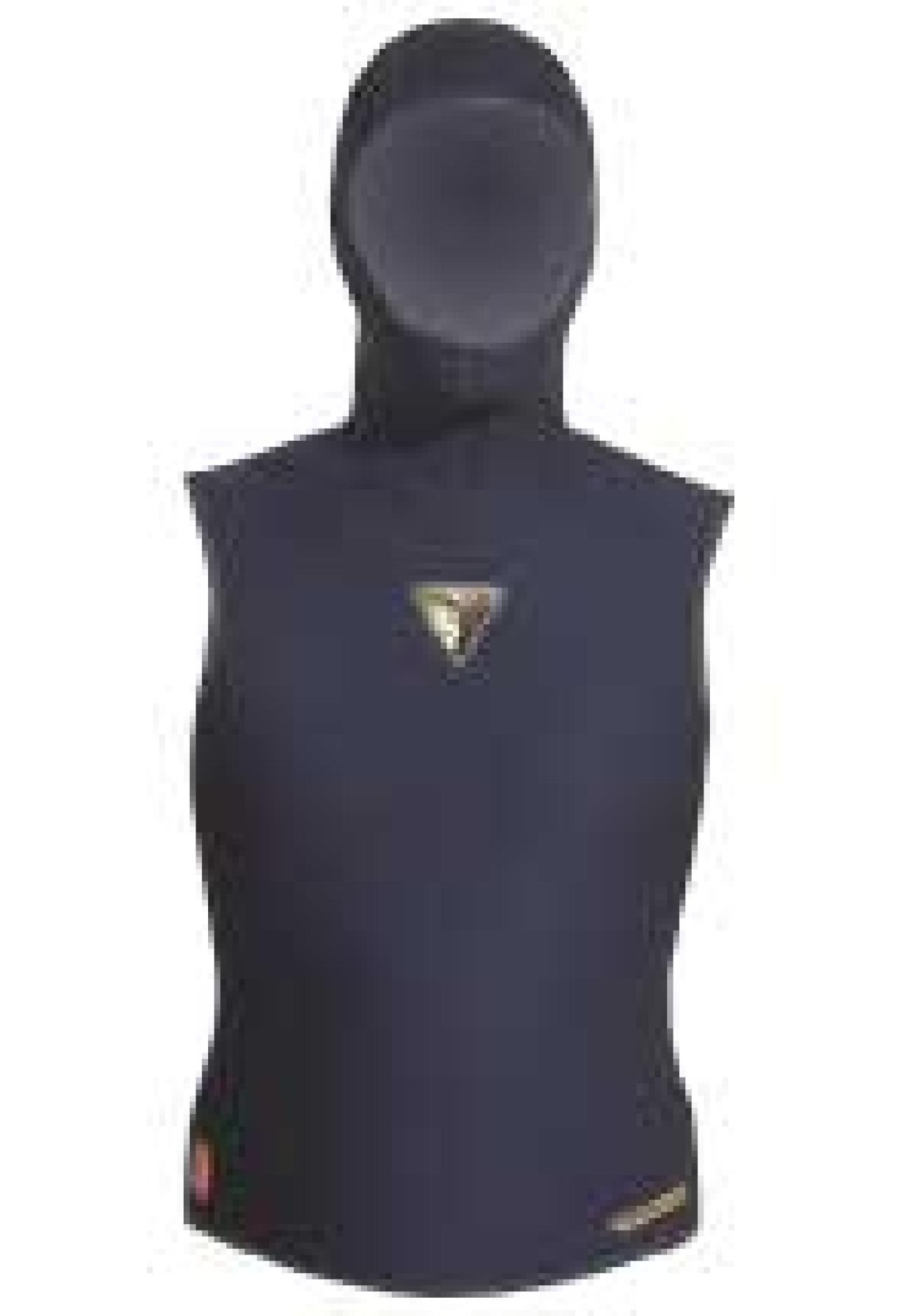
Henderson Gold Core 5/3 Hooded Vest
| Henderson Aquatics Gold Core 5/3 Hooded Vest
Known For: Good seats
The slick lining seals to your skin if worn inside a jumpsuit. If worn over a suit with a slick outer torso, it also seals. And if worn over a conventional nylon torso, the water flow between layers is probably reduced. The hood has a chin cup, and its slick lining not only seals but makes it easier to slip on. 3mm vest, 5mm hood. $129.95
SeaQuest Testers' Choice
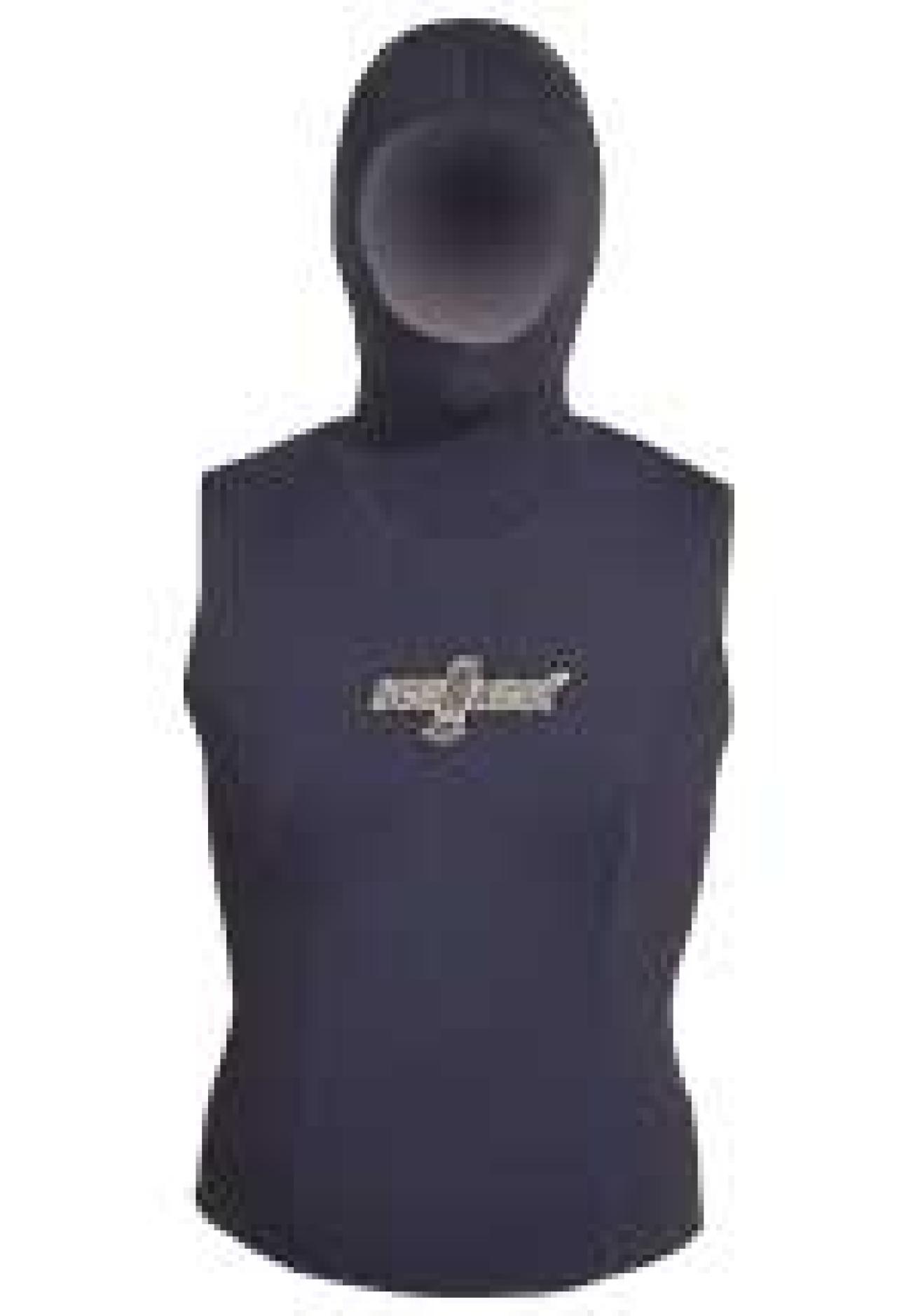
SeaQuest Isoflex Hooded Vest
| SeaQuest Isoflex Hooded Vest
Known For: Easy on
Front and back panels are lined with slippery stuff while side panels are thinner and stretchier. The women's styles have a zipper on one side. The hood is one of the best, with a wide face seal, a chin cup, and a vent on top to release the air that collects when you purge your mask. 4mm with some 3mm panels. $85
SubZero Testers' Choice
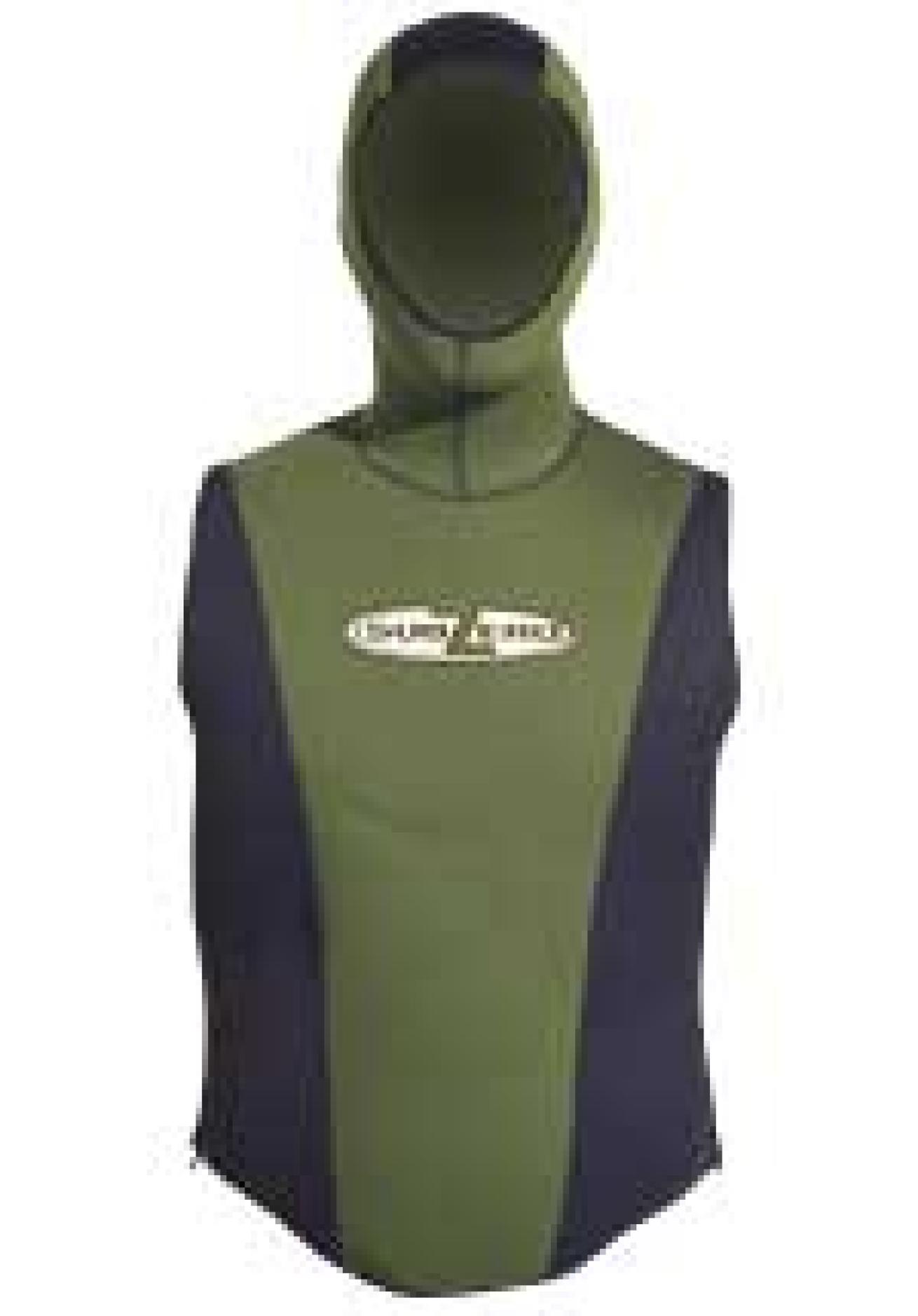
SubZero Hooded Vest
SubZero Hooded Vest
Known For: Easy on
Unusually user-friendly, the SubZero vest has zippers up each side to within 4 inches of the armhole, plus super-stretch panels bordering the zippers, plus a slick inside. Women's sizes are anatomically correct. 2, 3, 5 or 6.5mm. $89.99 to $99.99

